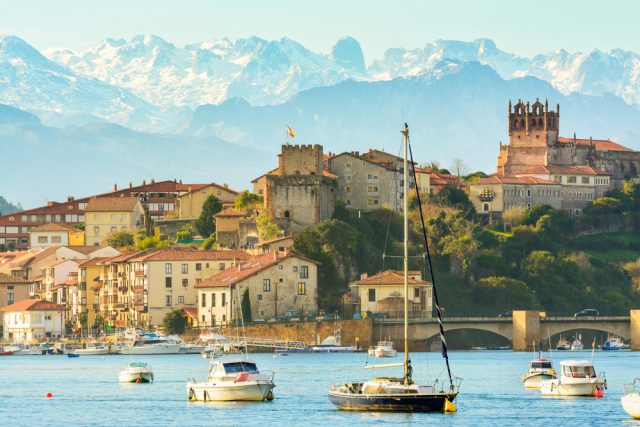 Jon Chico
Jon Chico
The yearly “hot lists” issued by the highly influential travel-media giant Lonely Planet are always eagerly awaited by travellers looking for “the next cool thing”, and they’re usually destinations under the radar or even completely unexpected. This year’s top ten in Europe is no exception (well, maybe just one exception), and a couple even took me by surprise; in any case, it makes for great reading and travel dreaming, and Iberia serves six out of the ten directly (the rest via code shares). Check ’em out…
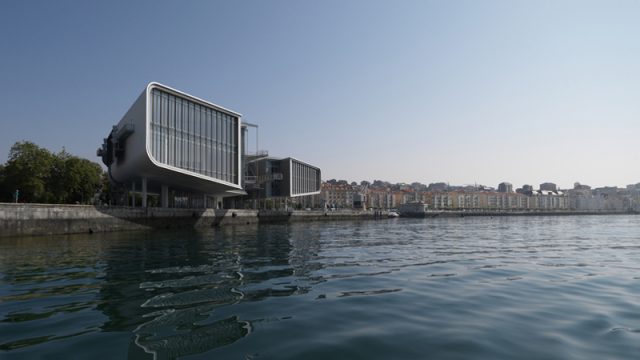 Enrico Cano
Enrico Cano
Cantabria, Spain
One of the gems of green north Spain, Cantabria is the nearest and dearest to Iberia – for obvious reasons – and a destination we’ve covered repeatedly. Its magic include wild beaches, misty mountains, prehistoric cave art, and lost-in-time churches as among its magic. This is also the year celebrating the 100th anniversary of one of Europe’s great national parks, the wild and craggy Picos de Europa, which Cantabria shares with neighbouring Asturias.
The region’s capital, bustling seaside Santander, is also in the middle of a dynamic reinvention, spearheaded by a revitalised waterfront whose star is the contemporary arts complex Centro Botín, designed by Italian starchitect Renzo Piano. Elsewhere, along the craggy coast amid charming fishing villages (top), the region’s beaches make it the surfing capital of Spain; its charming historic villages a wide menu of fantastic driving routes; and then of course there’s the Altamira cave and museum, the “Sistine Chapel” of prehistoric art.
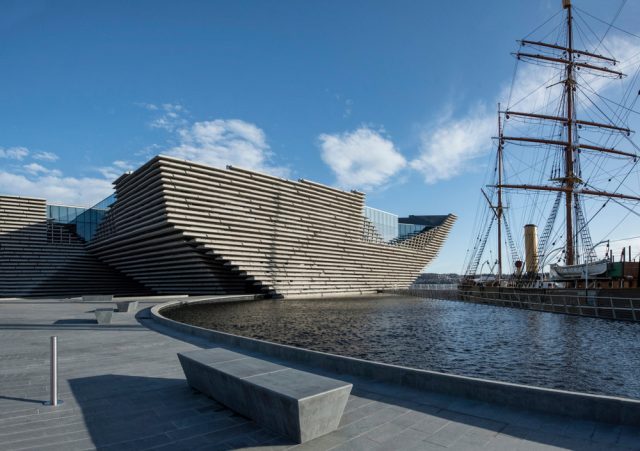 Abi Warner
Abi Warner
Dundee, Scotland
On Scotland’s east coast a bit over an hour by road/rail north of Edinburgh, the country’s fourth largest city has a lovely seaside setting, interesting historical landmarks, and famously friendly, welcoming locals. But what particularly caught LP’s fancy is Dundee’s current self-reinvention as “a city with an eye on the future”, thanks to its a £1-billion, 30-year regeneration project – especially focussed on rehabbing the historic waterfront – and building on the city’s UNESCO City of Design award in 2014. The centrepiece here is the V&A Dundee (above), a cutting-edge design museum set to open 14 September.
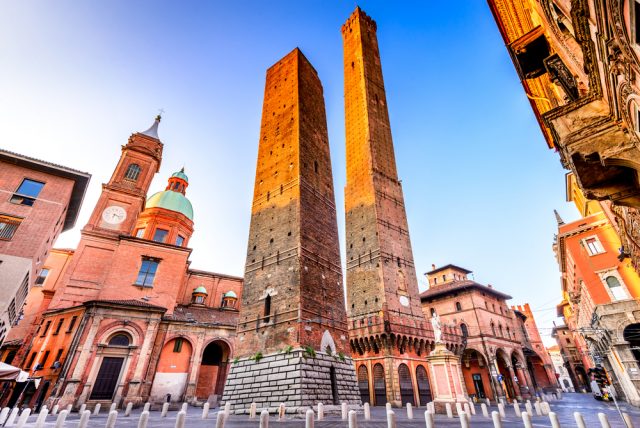 cge2010
cge2010
Emilia Romagna, Italy
In a country packed with superstar destinations like Rome, Venice, and Florence/Tuscany, the lovely, rolling region just north of Tuscany doesn’t always get the attention it deserves. But in addition to its history and scenic beauty, Emilia Romagna is reknowned among Italians (and of course quite a few in-the-know non-Italians) as – as LP puts it – “the best place to eat in Italy”. Its main city, Bologna (above, dubbed “the Fat” thanks to its gourmand reputation), besides being lively and historic, is known for as the place where ragù meat sauce was invented and is still done most deliciously. Meanwhile, Parma is the home of the delectable prosciutto and parmigiano (aka parmesan) cheese, as is Modena for balsamic vinegar.
Foodie fabulousness apart, another Romagnolo stars is Ravenna – actually the capital of the Western Roman Empire just before its collapse in the 5th century, and home apart from a handsome historic quarter to no fewer than eight Roman and Byzantine UNESCO World Heritage Sites, such as the Basilica of San Vitale, famous for its exquisite Byzantine mosaics. And LP also cites new attractions such as Bologna’s FICO (aka Eataly World, the world’s largest food hall/culinary theme park); the National Museum of Italian Judaism and the Shoah in Ferrara; and Rimini‘s restored Cinema Fulgor, soon to feature a museum about legendary film-maker Federico Fellini.
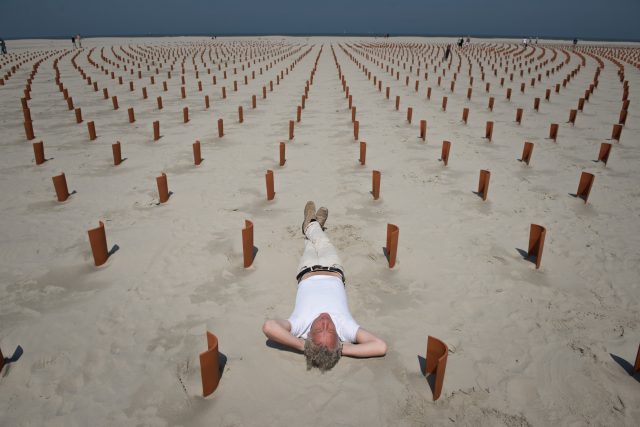 Ruben Hamelink
Ruben Hamelink
Friesland, the Netherlands
This region (aka Frisia) some two hours north of Amsterdam, gets the nod because its capital Leeuwarden is one of 2018’s European Capitals of Culture (which this blog covered back in January). Friesland is a moist, bucolic land of green meadows and forests; lakes and lagoons; small cities and towns; and of course quite a few canals. Speaking its own particular Germanic dialect in addition to Dutch (in which the region’s name is Fryslân) and of course English, it’s a also a favourite of domestic holidaymakers, who when they’re not travelling abroad just love its greenery and its beaches (it’s also a wonderful area for biking and rambling). What you won’t find much, however, are foreign visitors – this is something of a secret getaway the locals like to keep to themselves. Its Sense of Place art route (above) celebrates this rural landscapes and in particular the UNESCO World Heritage-listed islands set in the beautiful Wadden Sea.
Leeuwarden, meanwhile, is home to some 600 landmarks of note, with top attractions including navegable canals; the Oldehove (a 16th-century onetime church tower which leans even more than the Leaning Tower of Pisa); the Blokhuispoort (a onetime prison turned cultural centre); a picturesque harbour full of historic ships; the 13th-century Grote or Jakobinerkerk, the city’s most notable church; De Kleine Kerkstraat, considered the Netherlands’ most charming shopping street; and the Freismuseum (as the name implies, covering the history of Friesland and its people.
 FRiMAGES
FRiMAGES
Provence, France
Already a perennial favourite with many international visitors, LP says “nowhere embodies the French art de vivre like Provence”. Besides its bucolic landscapes and impossibly postcard-pretty coast, the stars of the South of France includes marvelous towns and cities such as Aix-en-Provence, Arles, Avignon, Cannes, Grasse (perfume capital of the world, with nearby iconic lavender fields, above), Marseille (its dynamic largest city and second largest in all of France), Nice (IMHO its nicest large city), St. Paul de Vence, and St. Tropez.
LP’s reason for highlighting Provence lies not just in the reopening of the direct, four-times-a-week Eurostar route from London but also a number of high-profile openings such as the Fondation Carmignac exhibition space on Île de Porquerolles (the island off the coast between Marseille and St. Tropez) and the artistic program at the Frank Gehry-designed Fondation Luma in Arles.
 Milan Gonda
Milan Gonda
Small Cyclades, Greece
The Cyclades in Greece’s Aegean Sea include marquis names such as Mykonos and Santorini, but there are 218 more of them, and the handful located between Naxos and Amorgos known as the Small Cyclades (aka the Lesser Cyclades) are for LP “a taste of the Greek islands as they were decades ago”.
It especially cites the islands of Irakleia (the largest), Schinoussa, and Donousa, each with just a a couple hundred inhabitants or less, whose “charm lies in pristine, one-taverna beaches, a slow pace of life and a rare sense of timelessness – the ideal ingredients for switching off”. Opa!
Lonely Planet’s other four destinations for 2018 – in Albania, Slovenia, Kosovo, and Lithuania – can be reached via Iberia code shares with other airlines. Again, come have a look at the complete list here – and happy trails!

